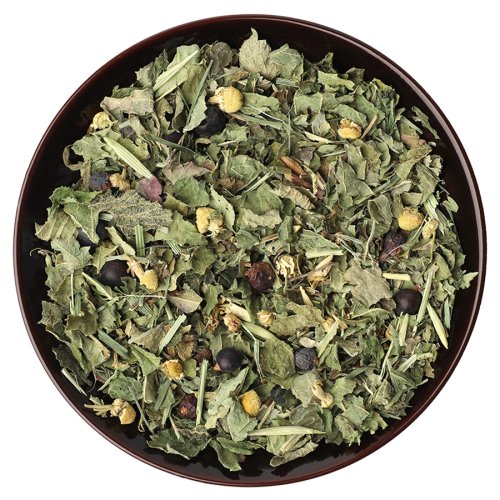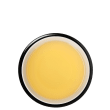Stinging Nettle, Balm, Bearberry Leaves, Green Oats, Orthosiphon Leaves, Passionflower, Valerian, Goldenrod, Juniper Berries (Slightly Crushed) & Camomile
Stinging Nettle
For a long time, nettle was one of the most underestimated herbs and has only recently been receiving increased interest again.
Lemon Balm
Lemon balm (Melissa officinalis) is actually a southern European plant. However, due to its wide range of uses, it was cultivated throughout Europe early on as a popular flavouring herb. In the Middle Ages, it was cultivated in every monastery garden because it was considered exceptionally valuable and indispensable.
Bearberry Leaves
Bearberry (Uvae ursi folium) is an evergreen dwarf shrub that belongs to the heather family, like gooseberry and blueberry.
Valerian
Valerian (Valeriana officinalis) is one of the best-known native plants and has been highly valued for its diverse uses since ancient times. This is also reflected in its name: the botanical name of true valerian, Valeriana officinalis, is derived from the Latin word "valere," which means "to be healthy."
Green Oats
Green oats (Avena L.) are made from unripe, green oats that are harvested before full bloom. Green oats are very alkaline and contain many phytochemicals.
Orthosiphon Leaves
While some other herbs have a history of use of over a thousand years, orthosiphon (cat's whiskers) was only introduced to Europe in the 1970s. However, in its countries of origin – Indonesia and Australia – orthosiphon has been appreciated for centuries.
Passionflower
The passionflower has been used in the Americas as a herb and food by indigenous peoples for centuries. In Europe, the plant has been highly regarded for its extraordinary beauty and other properties ever since a Spanish doctor brought the flower back in 1569.
Goldenrod
The herb of the European goldenrod (Solidaginis virgaureae herba), a plant that has been known for centuries.
Juniper Berries
Juniper was already described in ancient herbal medicine.
Camomile
Chamomile is one of the most well-known native plants and has been an integral part of herbal medicine for centuries. Chamomile flowers have a valuable combination of different phytochemicals.










